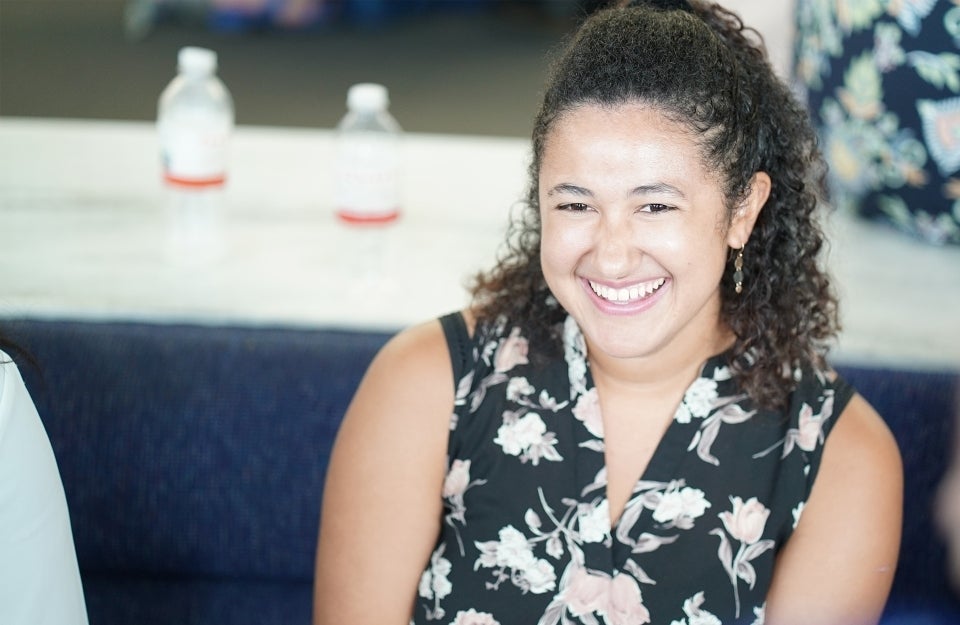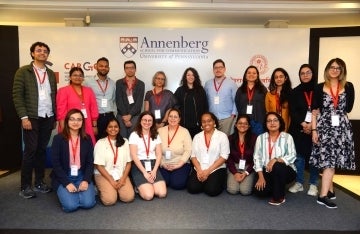Society for Research on Nicotine and Tobacco Spotlights Mary Andrews
In this Q&A, Andrews gives an overview of how she became interested in health disparities research and what she's learned so far.

Each quarter, the Society for Research on Nicotine and Tobacco’s Health Disparities Network features the work of a member who is advancing the field of tobacco-related health disparities. This quarter, Annenberg School doctoral student Mary E. Andrews is spotlighted in the following Q&A. Andrews’ research focuses on tobacco product communication and racial/ethnic disparities.
What is your academic background and current affiliation?
I’ve always been interested in helping others lead healthier lives, so I started off as a nursing major at Mount St. Mary’s University. After some coursework, I realized I was most excited about addressing health through behavior change and neuroscience. So I transferred to Hampshire College to complete my bachelor’s in cognitive neuroscience and completed a senior thesis using neuroscience and behavioral methods to study how sleep impacted emotional reactivity and memory. I was then introduced to tobacco control research as a post-baccalaureate fellow at the National Institute of Minority Health and Health Disparities (NIMHD). At NIMHD I worked with Dr. Kelvin Choi on studies that examined how tobacco marketing, policy, and social determinants of health influence beliefs and behavior. Currently, I am a Presidential Ph.D. fellow at the Annenberg School for Communication at the University of Pennsylvania, where I am part of the Communication Neuroscience Lab and the Health Communication & Equity Lab.
What led you to pursue a career in health disparities research, and tobacco-related disparities in particular?
As a Black mixed-race woman, I have first-hand experiences of tobacco-related health disparities within my own family. Both of my Black paternal grandparents smoked their entire adult lives and died from smoking related illnesses, my grandmother from lung cancer when I was an infant, and my grandfather from kidney cancer during my freshman year of college. The social inequalities they faced contributed to their smoking and untimely deaths. These inequalities included targeted cigarette marketing at their Historically Black College and University, multiple levels of racism, and sexism in my grandmother’s case. My white maternal grandparents who did not experience these social inequalities, did not die of tobacco-related causes. After witnessing this disparity in my own family and learning that these patterns are reproduced at a large-scale nationally, I decided to center my research around understanding how social factors have a cascade effect on health outcomes and finding effective communication interventions to reduce health disparities.
What are your current research interests?
Using neuroscience, behavioral, and self-report methods to study how the intersection of identities, social experiences, and structural inequalities influence the way individuals process different types of messages, and how exposure to messages leads to changes in health behavior.
Two important “take home points” from your research:
- Many things in the environment can serve as smoking cues, which triggers cigarette craving
- Anti-smoking interventions should also address smoking risk factors related to social oppression (e.g., racism) in addition to identity (e.g., race)
What has been the most surprising thing you have learned in your career thus far?
How deeply rooted health disparities are in seemingly non-health related things, like targeted advertising, where people have historically been allowed to live, and social support. Also, how interventions are often not tested on a diverse group of people, so we often lack empirical evidence to know what works for groups of people who are not represented in research.
What do you hope your career in research will change in the field of tobacco control?
I hope my research can inform tobacco control policy to restrict more point-of-sale tobacco marketing and show evidence for communication interventions that work for groups historically targeted by the tobacco industry, specifically the LGBT+, low SES, and Black community.



